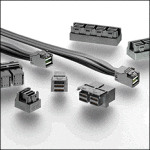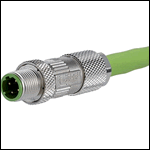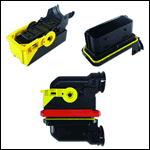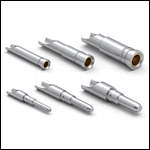Tech Meets Fashion at TE’s Wearables Lab
As consumers try to warm up to Google Glass, Apple’s iWatch, and their Fitbit wristbands, TE unveils its latest “collection”: A Silicon Valley-based incubator team to enable the next generation of wearable devices.
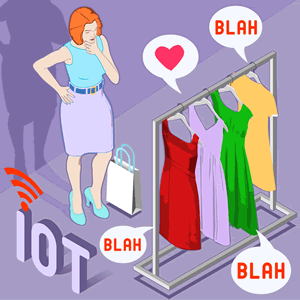 Nicholas Langston, Jr., insists he’s the luckiest guy you’ll ever meet.
Nicholas Langston, Jr., insists he’s the luckiest guy you’ll ever meet.
Langston heads up TE Connectivity’s Wearables Lab in Menlo Park, Calif., a venture officially announced in November 2014 by the interconnect technology leader to address the rapid growth in the wearables device market, which shipped 19 million devices in 2014 and is expected to ship almost 112 million devices in 2018. The fact that TE is devoting resources to develop an emerging market may not be surprising, but the way it’s gone about it is unique to both the company as well as the connector industry as a whole.
TE Connectivity launched a startup.
“When I saw what their vision was, it was just a beautiful opportunity to do something in a new way, inside a traditional company,” said Langston.
Starting Up
Despite being part of a $12 billion company of 75,000 employees with customers in more than 150 countries, the Wearables Lab takes an unassuming approach to its role in the market. It is purposely located in the heart of Silicon Valley to absorb and attract the entrepreneurial spirit that thrives in the technology hub from which so many of today’s biggest consumer products emerged; it seeks out customers at local Meet-up events and through partnerships with accelerators and distributors; and its team of nine (most recruited from outside of TE) shares a large open space in its facility to encourage confab and collaboration.
This co-location of an entire team in one facility is unusual at TE, and Langston thinks the innovative move will contribute to the Lab’s overall success.
Expert Advice
Of course, it is TE’s vast pool of technology experts that sets apart this particular “incubator.” While the Wearables Lab offers experimentation and problem solving to enable the next big thing, it often calls upon TE’s connector industry veterans to brainstorm solutions to vexing problems.
Langston, who has a background in startups, believes it is TE’s intellectual resources that set the Wearables Lab apart in a market that is still building its foundation. “Our team in Menlo Park is surrounded by the scientists that make up the corporate R&D team, so if we have a problem with a particular ink on a textile, we can walk up and down the hall and ask if anyone has a solution,” he said. “It’s just this beautiful coming together of the right bits at the right time.”
The Wearables Market
The worldwide wearable device market recorded its eighth consecutive quarter of steady growth in the first quarter of 2015. According to the International Data Corporation Worldwide Quarterly Wearable Device Tracker, vendors shipped a total of 11.4 million wearables in the first quarter of 2015, a 200% increase from the 3.8 million wearables shipped in the first quarter of 2014.
Solving design challenges in an emerging market is no easy task. Where much of TE’s customer base specifies parts for well-defined designs in established market segments, potential customers for the Wearables Lab do not show up with system schematics and a bill of materials in hand. “Some of them don’t quite have products on the market yet,” said Langston. “They come to us and say we have to help them, and when we ask what they need, they ask what we can do. Then you have this really weird chicken-and-egg discussion.”
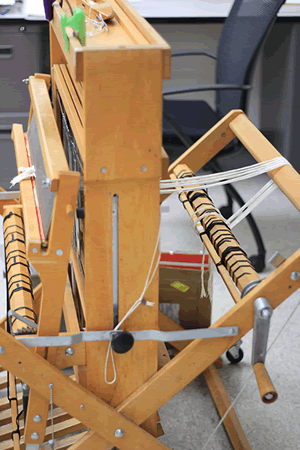
A loom helps TE Connectivity’s new Wearables Lab experiment with developing new solutions for state-of-the-art wearable products that require embedded electronic systems in textiles. (Source: TE Connectivity)
A day at the Lab is much more collaborative and creative than you might expect of a typical component manufacturers’ facility. All seated in one big room adjacent to the work area, the team might give tours to potential customers; perhaps co-design with a device manufacturer’s engineers visiting from across town; product development engineers may test a textile idea on the loom that sits in the work space; they might participate in a regularly scheduled “Innovation Hour” where they brainstorm or learn from a visiting speaker; or they could be on the weekly call with TE engineers from all over the world. There are usually several different things going on at once, with lots of energy and possibility filling the space.
Technology Challenges
While the Wearables Lab draws from TE’s deep experience in connectors, antennas, and sensors, Langston’s team quickly identified two key areas that were vital to the success of a wearable device and are currently a challenge for the connector industry. The first is wireless power.
“We believe if you wear it, you won’t plug it in. There isn’t really a good use model for that,” said Langston. So the Lab has taken some of the existing wireless power technologies—the transmitters and receivers embedded in the device—and tried to miniaturize them to a form and shape that will be useful in a wearable.
For wearables, the embedded antennas get crowded as the devices get smaller, and current fashions call for sleek and sexy accessories, which has meant more devices encased in metal, neither of which is an optimal environment for an antenna. The antennas also must be safe to wear near the body. Lastly, the Lab must develop antennas, sensors, and connectors that can survive a washing machine. Luckily, the Lab joins forces with TE’s nearby antenna group to solve these problems.
The second key issue the Lab wants to address is textile connectivity, what Langston refers to as the hard-to-soft transition.
“There have been antennas sewn into textiles for a long time,” said Bruce Bishop, TE fellow in the antennas group. “Trying to do it in a way that is aesthetically pleasing is a different situation.”
Most consumers still think of wearable devices as “hard” – your Fitbit, Apple iWatch, or Google Glass. But the Lab’s team believes connected textiles are where the future of the market lies, and that’s where the “fashion people” join the mix.
A Diverse Team
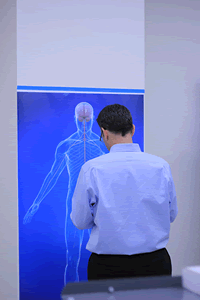
TE Connectivity’s Wearables Lab team consists of professionals that include electrical and mechanical engineers to materials science experts, pioneering the use of conductive materials for a range of wearable products. (Source: TE Connectivity)
Most of the Wearables Lab team was recruited from outside TE.
Nick Langston, with an education in music and many years playing guitar and keyboards, came through startups and small companies. He and his father started a company together and sold it, then got involved in private equity roll-ups in semiconductor manufacturing. When the time came to choose his team, he looked for diversity in experience.
“We constructed a team with a really wide-ranging set of skills. TE is a company that makes electro-mechanical interfaces, so we have mechanical engineers and electrical engineers, as you’d expect,” he explained. “But we also have textile engineers, people who have backgrounds in fashion, design, web programming, materials science, because we need to take that extra perspective into consideration as we start to dream up some of these products.”
The unique makeup of the team was key to a successful project with Google. This past June, TE announced it had developed a proof of concept that allows traditional garment manufacturers to develop smart or connected textiles by easily integrating with the workspace and workflow used in traditional garment production. The process, which the Wearables Lab developed at the request of the Google Advanced Technology and Projects team and is called Project Jacquard, enables production of garments that can better survive the harsh conditions of normal wear, machine washing, or dry cleaning.
Langston believes the different points of view of his team made the project successful. “We really had to rethink how we approached this, and that’s where this diverse skill set comes in handy. When you’re talking about fashion and apparel, and then you’re talking about electronics, there’s not really a common foundation between the two. You don’t really have a baseline where everybody can agree ‘this means that’.”
To execute Project Jacquard, the Lab developed a process that leverages the skills and tools with which textiles workers are familiar while ensuring the new techniques wouldn’t compromise the connectivity of the garment.
Form vs. Function
It’s the age-old question for any designer: How do you balance form and function?
Megan Grant, product development engineer, studied fashion design and started out in the fashion industry, but left after a bit because “it’s not a very nice industry.” She ended up working in interface development, writing software. A few years ago, when the “maker” movement took hold and many interface developers decided to reach outside their screens, Grant went back to her original training and began researching how to get computer power into textiles. She did some work as a freelancer for TE, and Langston was eager to recruit her for the Wearables Lab.
Now Grant, along with Trish Hayes-Danitz, another product development engineer at the lab, work together to solve the problem of the hard-to-soft connection. (Hayes-Danitz was trained as a textile designer and has worked for J. Crew, but after relocating to California, started work on a degree in materials science at San Jose State.)
“We both believe that by creating a good connector system, we will enable the market,” said Hayes-Danitz. “We try to leverage the knowledge that is already at TE but at the same time, we have this extra requirement of materials and technology that is completely new.”
Both women are excited about their work at TE and are comfortable working alongside mechanical and electrical engineers, although all members of the team get a good laugh when they compare the differences between the apparel and electronics worlds.
“Engineers want to understand from a customer, ‘What are your tolerances for this part?’ And if you ask someone in apparel, they shrug and hold up their hands and say, ‘I don’t know – a couple of inches apart? Maybe a foot apart?’ And the engineer’s head kind of explodes when he gets answers like that,” laughed Langston.
“Fashion is there to break rules, but engineers love rules,” said Grant. “In a garment, the difference of a centimeter or two in standard sizing is acceptable, but in engineering, half a millimeter is a horrifying error.”
The Next Big Thing
The next wave of wearables, Langston believes, will be less descriptive and more prescriptive.
“The truth is, if you look at the data, we all hear about wearables ending up in a drawer after three months because they’re not engaging enough,” he said. “We believe that data science is going to improve and become more insightful and useful. Today it’s all about what we’ve done over the course of the day, but we’re going to move to a time where they are more prescriptive, telling us what we need to do to stay on track.”
Langston thinks the first big successes will be seen in military applications like the connected soldier, then in the enterprise – connecting workers in the field or in remote locations to their home offices. Success in those applications will lead to greater innovation in the consumer market.
The Lab team believes wearables will change the way we all interact with information, and is committed to mixing the passion of a startup with TE Connectivity’s expertise to move beyond this first wave of devices, which will most likely end in consumer fatigue, then enable the next generation of proactive “smart things.”
“I have the best job in the company,” said Langston. “It is exhilarating to work with other innovators, and to help them connect their unique vision to the marketplace of wearable devices.”
